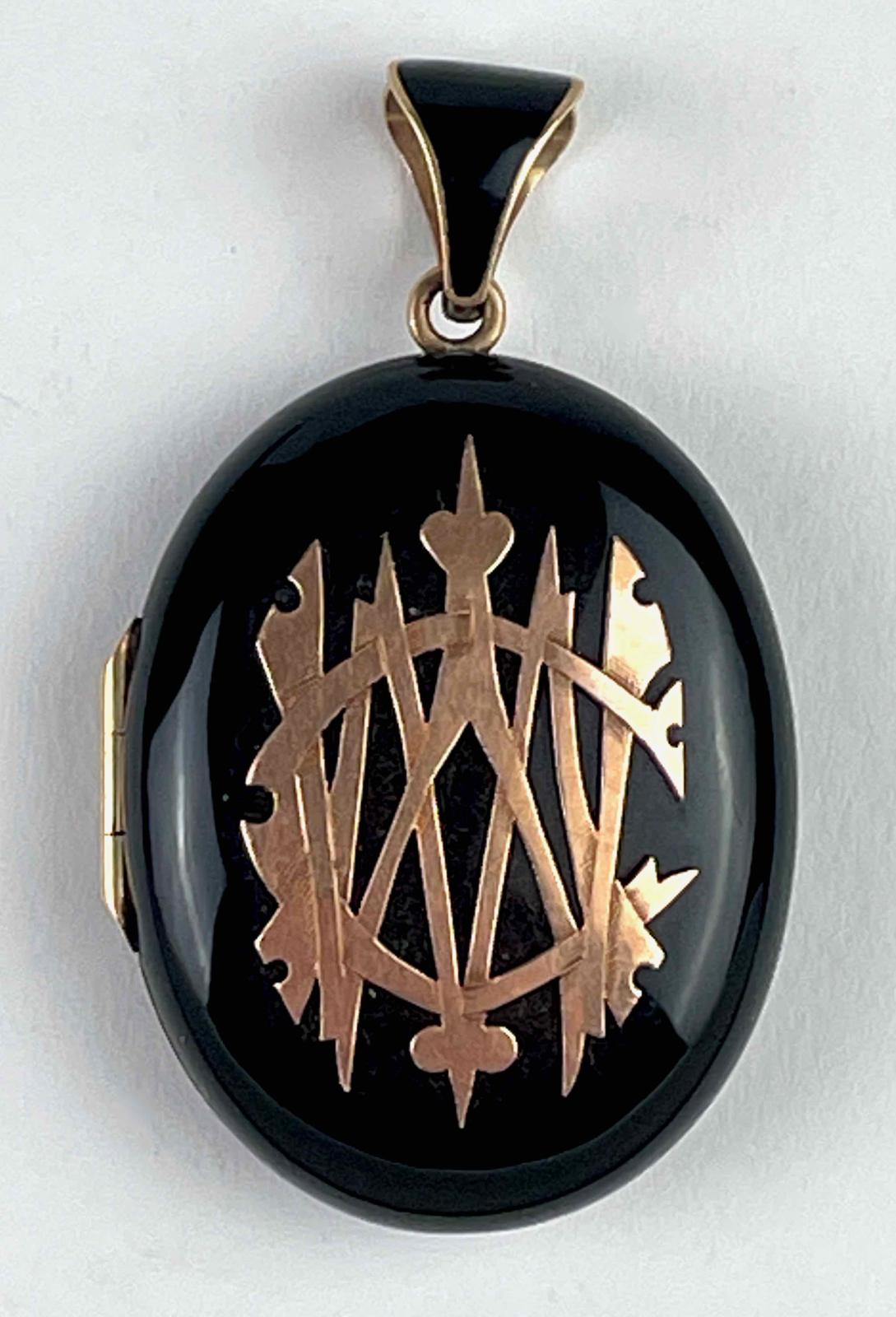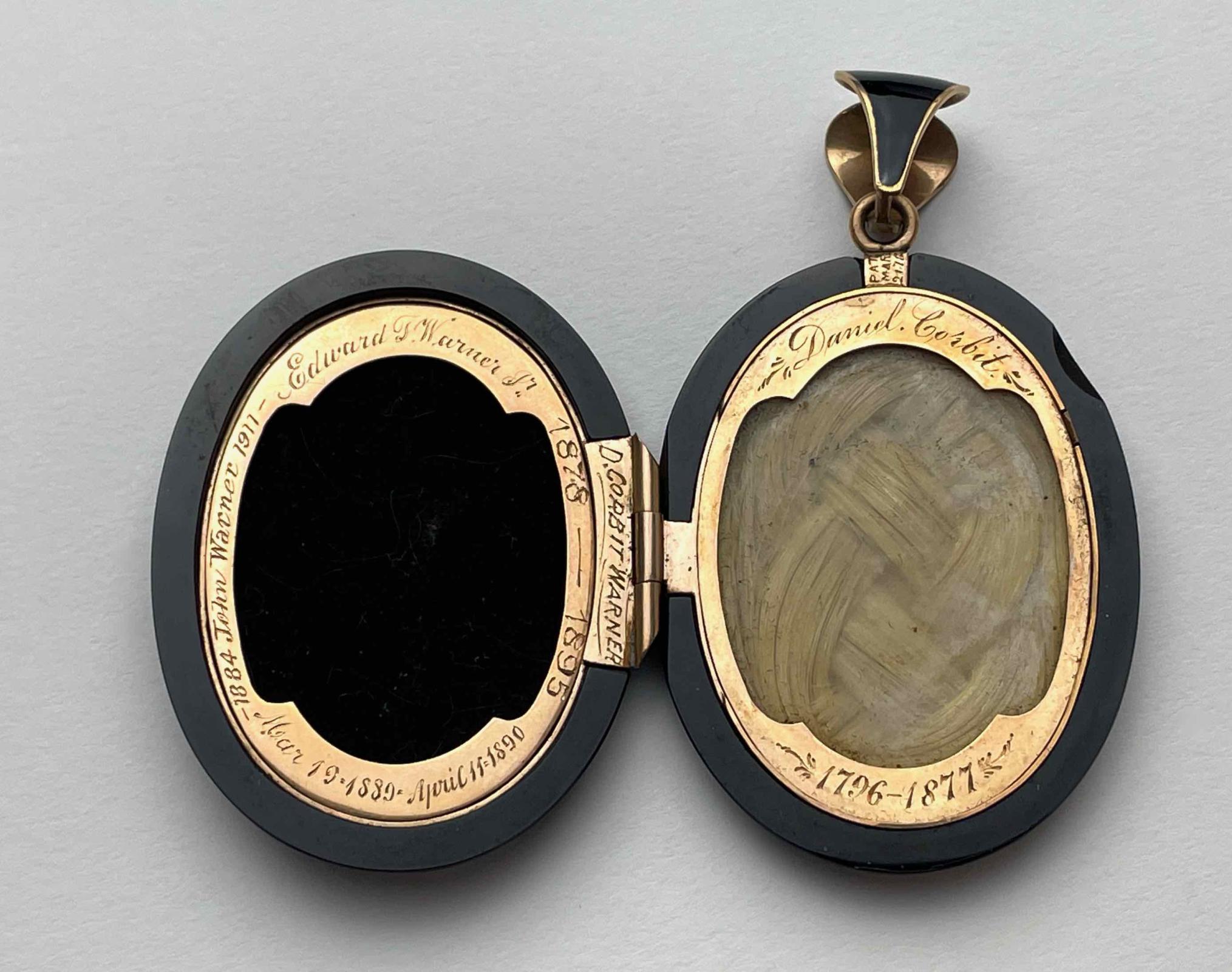Mourning locket or pendant
Probably Philadelphia, Pennsylvania
1877
Measurements
2-3/8 in x 1-3/8 in x 5/8 in
Materials
Black pigmented celluloid, gold, glass, hair
Credit Line
Historic Odessa Foundation, gift of Barbara Nowland Allison
Accession Number
2012.201
Inscription
Intertwined initials MCW, for Mary Corbit Warner, decorate the front of the pendant.
"PAT / MAR 21.76” is stamped near the hanging ring; “Daniel Corbit / 1796-1877” is engraved around gold framing the braided hair set into the pendant; “Edward T. Warner Jr.” is engraved at the top of the gold oval inset into hinged cover and “Mar 19·1889·April 11:1890” is at the bottom; “—1884 John Warner 1911–” is on the left side; “D. CORBIT WARNER / 1878 — 1895” is on the abutting hinge plate and the right side of the gold oval.
Provenance
The pendant descended from Mary Corbit Warner (1848-1923) to her niece Eliza Naudain Corbit Lea (1861-1945) to Louise Corbit Lea Nowland (1898–1989) to the donor.
Comments
The hinged cover opening to a shallow space transforms this black, oval pendant into a locket. It appears to be made of a black pigmented celluloid, an early type of colorless plastic that could be molded, cut, and otherwise shaped into a variety of things and then polished to the desired degree. As a new and wondrous material of the 1860s, its uses included billiard balls (replacing ivory) and high-end jewelry, dresser and manicure sets, and clothing accessories.
Gold intertwined initials of Mary Corbit Warner, its first owner, ornament the front in low relief. The gold has a reddish hue, indicating that copper was added to create a warm-colored gold alloy (of approximately 18 carats) popularly called rose gold. Like other types of gold, it does not tarnish or oxidize.
Cursory examination of the engraving inside the locket reveals that it was executed in four separate campaigns. The earliest is that memorializing Daniel Corbit, father of Mary Corbit Warner. Daniel died in 1877, which is when Mary likely purchased it. The locket holds a braided cutting of his hair visible under glass. Jewelry incorporating a loved-one's hair was a remembrance strategy that had been in use for over a century.
In 1890, Mary’s youngest son, Edward T. Warner Jr. died at 13 months old. She added his name to her mourning pendant. Her oldest son, D. Corbit Warner born in 1878, died in 1895, and she had his name and dates engraved over the hinge and onto the narrow gold band. Her last son, John Warner, died in 1911 at age 27. His name and dates were fitted into the only remaining space, thus completing this heart-wrenching testimony to the uncertainties of life. Mary’s husband died in 1904.






